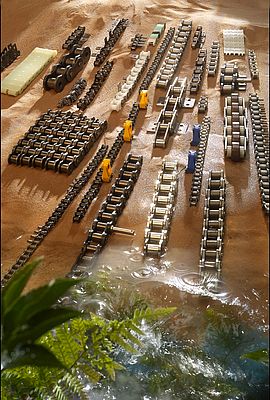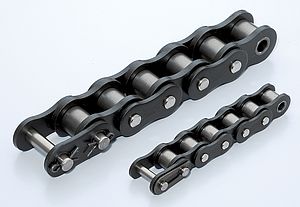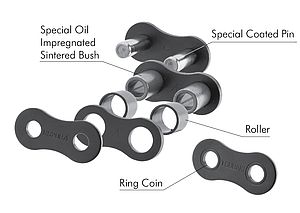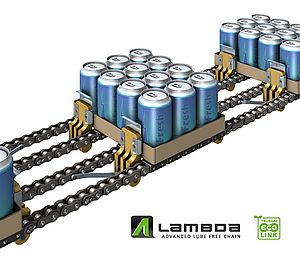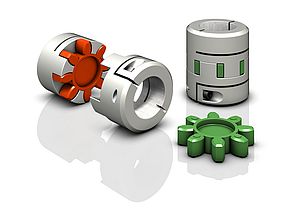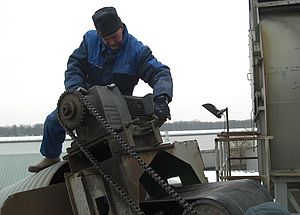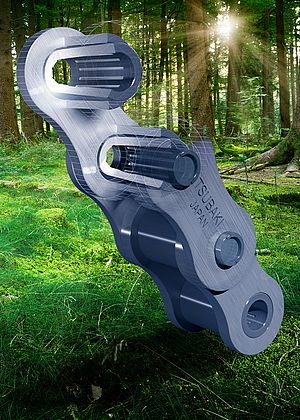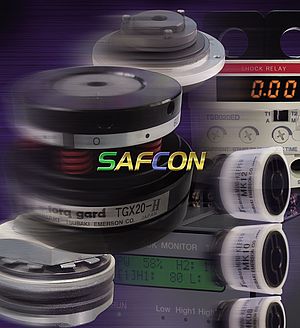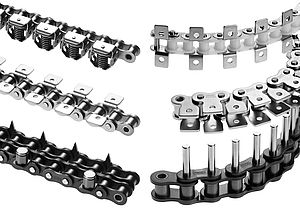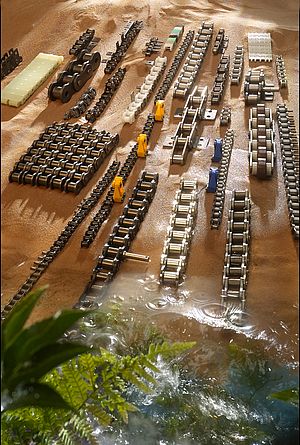Adaptation over time has resulted in increasing specialisation for roller chain, and the resultant increase in product variation has evolved the genus from a simple power transmission device that wore out and required regular maintenance to diverse species of chain that will perform difficult power transmission and conveying tasks in differing conditions, with little or no maintenance and greatly increased efficiency.
Roller chain is one of the most efficient, reliable and cost effective methods of transmitting motive power across a short distance. It is over 90% efficient in most forms and can be as high as 98% efficient. As soon as intermeshing gears are impractical in terms of proximity, roller chain comes into play as a reliable, efficient & cost effective solution.
What probably comes to mind for most people when they think of roller chains is car engines, where they demonstrate their inherent robustness and reliability. Car engines are required to cover high mileages without replacement cam belts; so many new engines now use roller chain to drive cams and other internal engine ancillaries. The product is designed to perform reliably, unchanged, throughout the lifetime of the engine.
These same characteristics make roller chain one of the most important power transmission components used within industry. What isn’t widely known though is the huge variation available in roller chain, and how the product can be used in such a wide number of drive and conveying applications. This ability comes from the myriad of adapted components, designs and construction materials available. The innovations in chain specifications and attachment designs are driving an evolution in the performance and capability of roller chain that seems almost Darwinian.
Whilst there are numerous standard attachments available to fit roller chain, more specialised, function related attachments are often needed in order to provide conveying solutions OEM manufacturers or final consumers need. For example, special spiked attachments used to convey plastic sheet material through heat sealing equipment in the packaging industry where a standard attachment simply cannot provide the answer.
Chains can be supplied in a variety of materials to meet different application requirements. Carbon steel is standard, but where corrosion protection or corrosion resistance are required, there are options of nickel plating, N.E.P. (carbon steel chain with a special multi layer protective coating), stainless steel and engineering plastic combinations. Lube-free chain is available for long term operation without the need for additional lubrication, particularly for sensitive industries such as food, beverage and pharmaceuticals. Attachments can be readily modified where required, for example by drilling holes or adding securing nuts or other adapted fasteners.
For an automotive vehicle manufacture, Tsubaki meet the conveying requirements with a special flight attachment fitted over Lambda lube-free duplex chain. The result is a chain conveyor for carrying vehicle body components where the need for lubrication has been eliminated, contamination of the conveyor minimised and chain articulation increased. When a customer in the pharmaceutical industry was looking for a conveyor system for transporting containers to a machine filling station, Tsubaki was able to meet the requirement with a hygienic engineering plastic and stainless steel roller chain fitted with a special welded pin. In the food industry, they supplied chain with an extended pin and circlip groove, manufactured in carbon steel, enabling a variety of block assemblies to be attached for conveying food products.
Specialist solutions require specialist suppliers who understand the nature of the application and the possibilities of the product, and who can tailor the chain and engineer the attachments to meet individual requirements.


